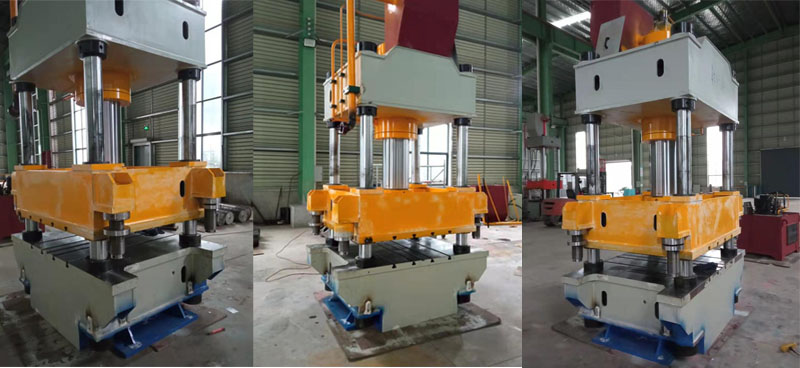How to Solve Noise When the Hydraulic Press is BlankingUpdate:2022-05-31 Hits:283
The four-column hydraulic press is a closed frame structure formed by four columns, an upper beam, a worktable and a sliding block in the middle. The downward pressure input through the cylinder of the hydraulic press can deform the workpiece we need to process. The hydraulic press can be used for blanking, pressing deformation, stretching and other actions. Following we will introduce the role of the buffer cylinder in the hydraulic press.The buffer cylinder is paly an important role to reduce the noise when the hydraulic press is blanking.

In the process of production and processing, we found that the moment we cut the steel plate with great force, the internal stress of the steel plate was released, and the force of the oil cylinder to cut the steel plate downward was suddenly released in that instant, and the steel plate was suddenly released. There will be a loud noise at the moment of the break, which will cause the entire four-column hydraulic press to vibrate. It can be said that the oil cylinder, the oil seal, and the entire machine are very damaged. So how can this problem be solved?
We saw that the buffer cylinder was used to buffer the downward force between the moment when the steel plate was broken. In this moment, the buffer cylinder was used to slowly release the downward stress. The first is to reduce the noise, and the second is to reduce the shaking of the entire four-column hydraulic press, which is convenient for workers to operate. The specific principle is that it is necessary to add 4 small working platforms on the four sides of the working table for forming the buffer cylinder on it, that is, to extend 4 brackets on the original working platform, and then add 4 to the positions corresponding to the 4 sides of the slider. a small cylinder. The height of the buffer can also be adjusted by adding a thread to the front end of the cylinder. Of course, these 4 oil cylinders also need the motor oil pump to supply oil to them. The stroke and buffer time required for buffering are all controlled and adjusted by us at the beginning. Adjust the position of the buffer cylinder according to the thickness of the material. When the slider reaches the buffer position (the buffer limit signal is sent), the buffer starts to give a certain back pressure to the slider (the material will be deformed by a certain amount at this time). When the set buffer time is up, The buffer cylinder quickly drains oil to cut off the deformed material. The buffering is completed or the lower limit is completed, and the slider returns to complete a single punching! The entire noise will be reduced, and the hydraulic press itself will not produce a lot of vibration, which is conducive to long-term use.
News
- Hydraulic Press Machine for Bicycle Aluminum Alloy Hydroforming2025-06-03
- Hot Stamping Hydraulic Press System2025-04-07
- Happy New Year 20252024-12-31
- Hydraulic Press for Automotive Engine Heat Shield2024-11-28

